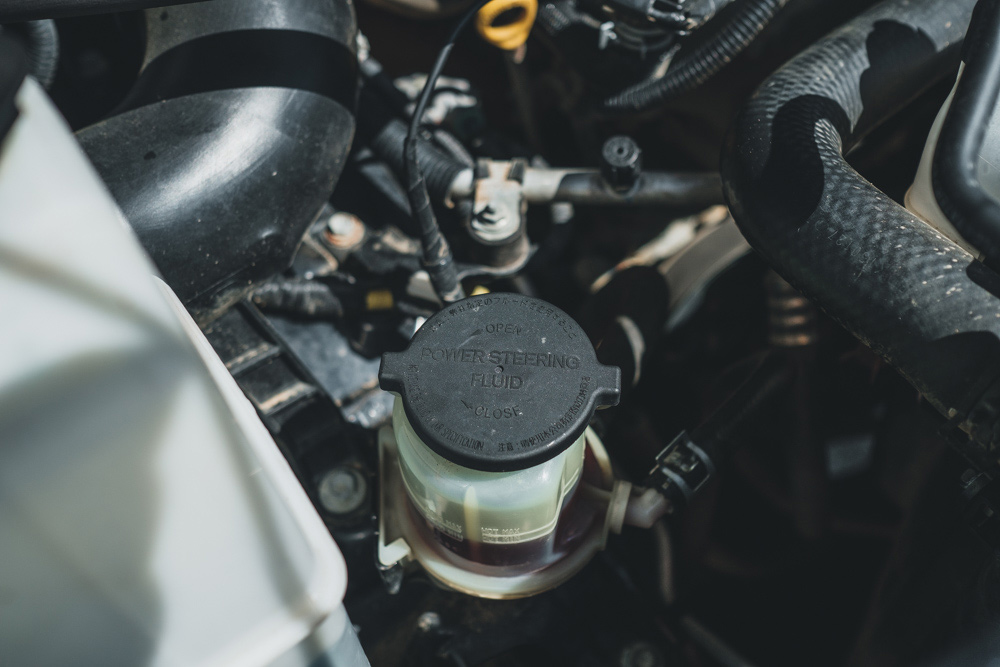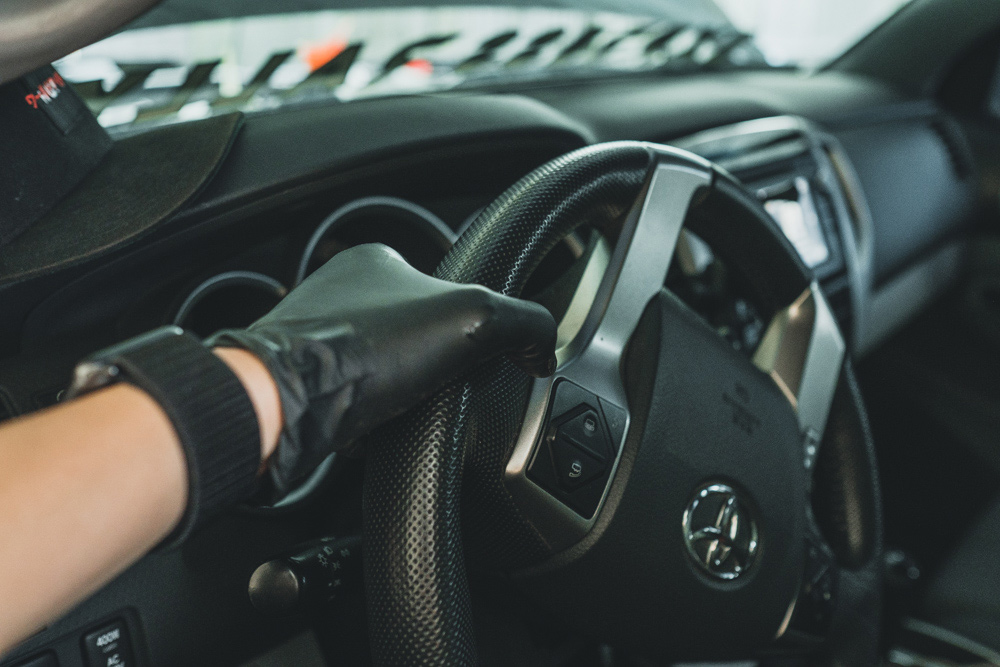
Routine maintenance is a key factor in keeping your Tacoma performing efficiently and guaranteeing it lasts as long as you expect. The two most common routine maintenances are motor oil and air filters. However, there are a lot of fluids that need to be changed to keep your Tacoma performing well.
Power steering fluid exchange is a procedure that is often overlooked. Now, you might think to yourself — how important is power steering fluid? Just like all the fluids in your Tacoma, over time, it begins to break down and that can lead to premature degeneration. On top of that, replacing a leaking steering rack is no fun, so remember to stay current with your maintenance.
If you are someone who likes to do their own work, then this article is perfect for you. You do not need a machine or anything fancy to flush out the fluid in your power steering system.
Table Of Contents
Materials Needed
Here is everything you will require…
- Floor Jack
- Jack Stands
- Needlenose Pliers
- Siphon Pump
- Old Rags or Shop Towels
- 3/8 Rubber Screw End Cap
- Old Container or Quart Bottle
- ATF Dexron II or III (1-2 quarts)
Step 1. Locate Reservoir

Open the hood and locate the reservoir. It will be located on the passenger side of the engine bay behind the headlight.
Step 2. Siphon Out Old Fluid

In this step, you are going to want to siphon out as much fluid out of the reservoir as you can. Remember, the more you siphon out, then the less mess it will create for the next step.
Step 3. Prep Area To Remove Hose

Before completely removing the hose, I recommend placing an old rag in the area below the hose, just in case the fluid spills. This is also the time you’ll need an old container or empty quart bottle for the return hose to go into.
Place the empty container on the frame right behind the radiator. Just make sure it does not tip over on its own. An empty motor oil bottle works best, but any container that fits will do.
Step 4. Remove Upper Return Hose

Now you are going to remove the upper return hose which is the smaller diameter hose that’s mounted above the reservoir. Take a pair of pliers to slide the hose clamp down so the hose can be removed. Once the hose clamp is removed, you will then be able to slide the hose off.
Once you remove the hose from the reservoir, you are then going to place the screw end cap over the barb on the reservoir. Lastly, just place the return hose into the empty container.

Step 5. Lift Truck
Now you will need to raise your Tacoma with a floor jack and place it on jack stands. The truck will need to be high enough to have the front tires off the ground so you can turn your steering wheel back and forth freely.
Pro tip: I decided to do this step after removing the return hose since it would be easier to access the reservoir due to my Tacoma being lifted. Once my Tacoma was on jack stands, I could not reach the reservoir without having some type of step stool.
Step 6. Fill Reservoir & Steer

So now the reservoir barb is plugged, return hose is inside the empty container and the tires are off the ground. You will now need to fill up the reservoir with ATF Dexron II or III. A funnel may be used to make pouring easy but it is not required.
Once the reservoir is filled, you will then cycle the steering by turning the steering wheel to the left until full lock, then to the right until full lock, then left again and so forth.
Note: Remember to keep an eye on the reservoir as you cycle the steering. Avoid completely emptying the reservoir so as to prevent air from getting into the lines. I recommend one cycle left to right or right to left, then fill up the reservoir and repeat the cycle. Leave about 1/3 quart of unused fluid so that you may fill up the reservoir once you finish cycling the system.
Also, keep an eye on the container with the return line as you do not want to have it overflow and cause a mess.
Step 7. Reinstall Return Hose
Once you have cycled the steering system with 1-2 quarts, you will then need to reinstall the return hose. Lower the vehicle back on the ground and then remove the screw end cap and install the return hose back on the reservoir. Once the return hose is installed, then fill up the reservoir with the remaining unused fluid (not to exceed the cold max line).
Remove the container from the engine bay and clean up any fluid that may have spilled.
Once again, move your wheel lock to lock a few times to ensure any air trapped inside has a chance to work itself out. Keep an eye on your fluid levels for the next few days and top it off as needed.
Final Thoughts
That pretty much sums it up. Adding this DIY to your list of routine maintenance will help keep your steering rack functioning as its best.
Remember, maintaining your vehicle on your own can help save costs, keeping money in your pocket and give you the peace of mind that your Tacoma is running right!


use to work as an Auto tech. if you have access to an extractor like you use in the first image, evacuate all the fluid, then refill your RESERVOIR with fresh PSF/ATF (depending on aplication) do the same back and Forth motion with the wheel, until the fluid is dark again, continue the drain and evacuation until the fluid stays bright like fresh usually 3-4 times is perfect, and for that extra level drive for a few days and then drain and refill and it should be super clean. also less messy since some PSF/Brake fluid will remove paint.
This siphon pump you listed does not fit into the reservoir hahahaha